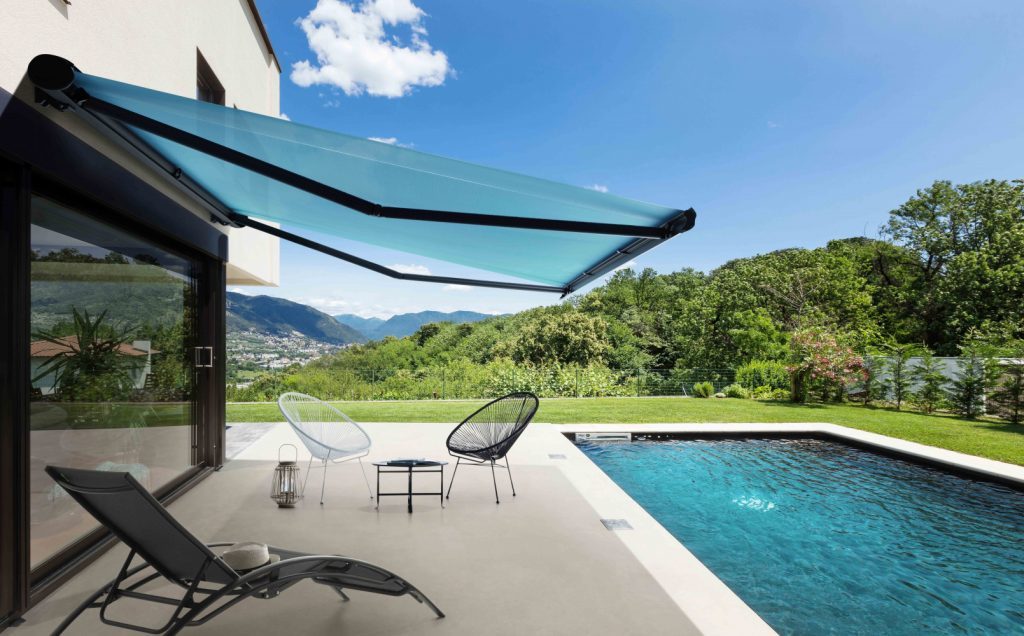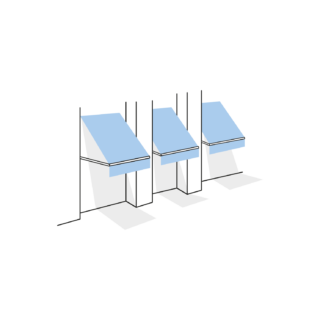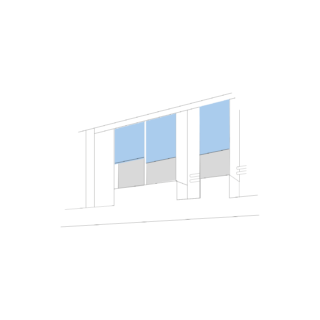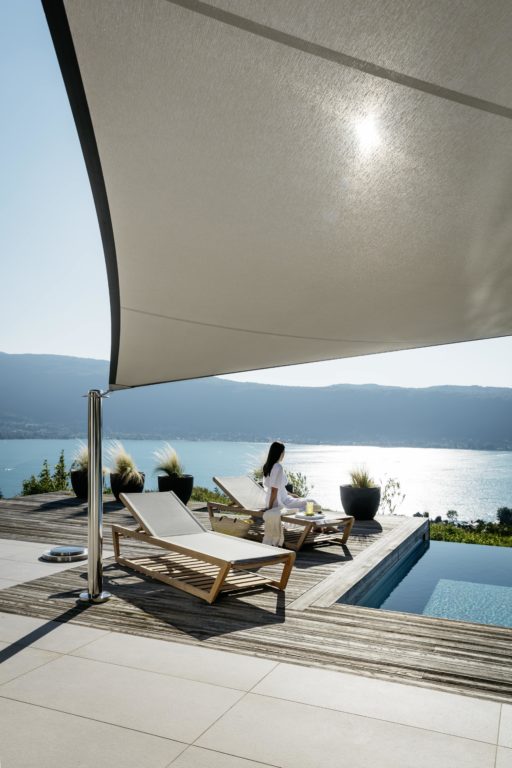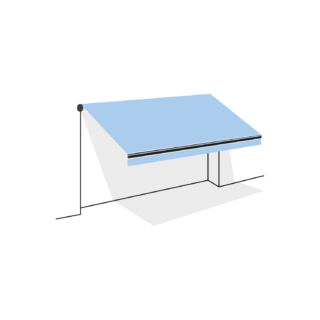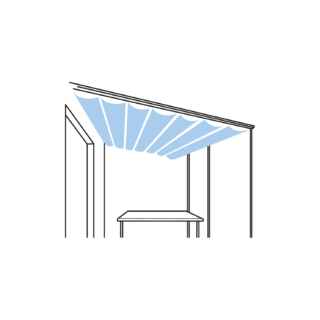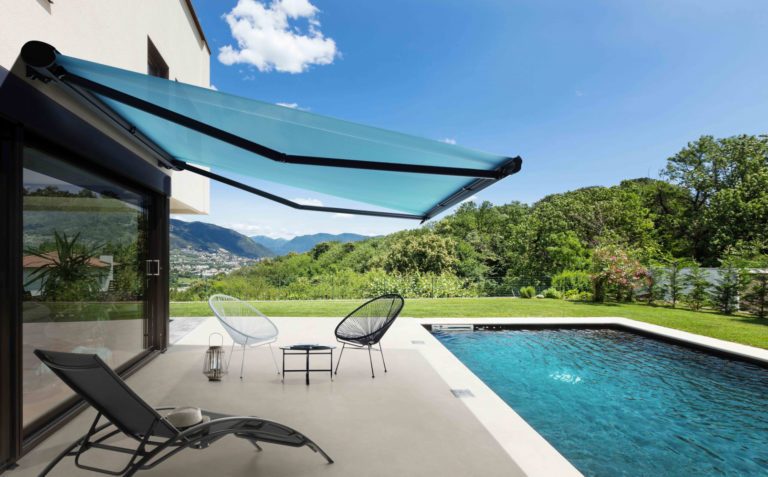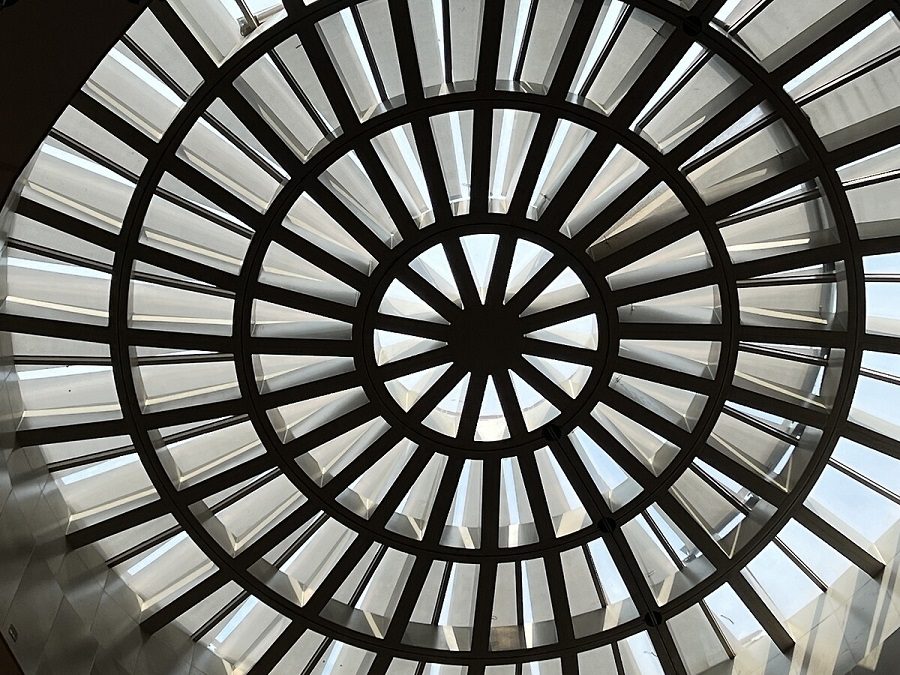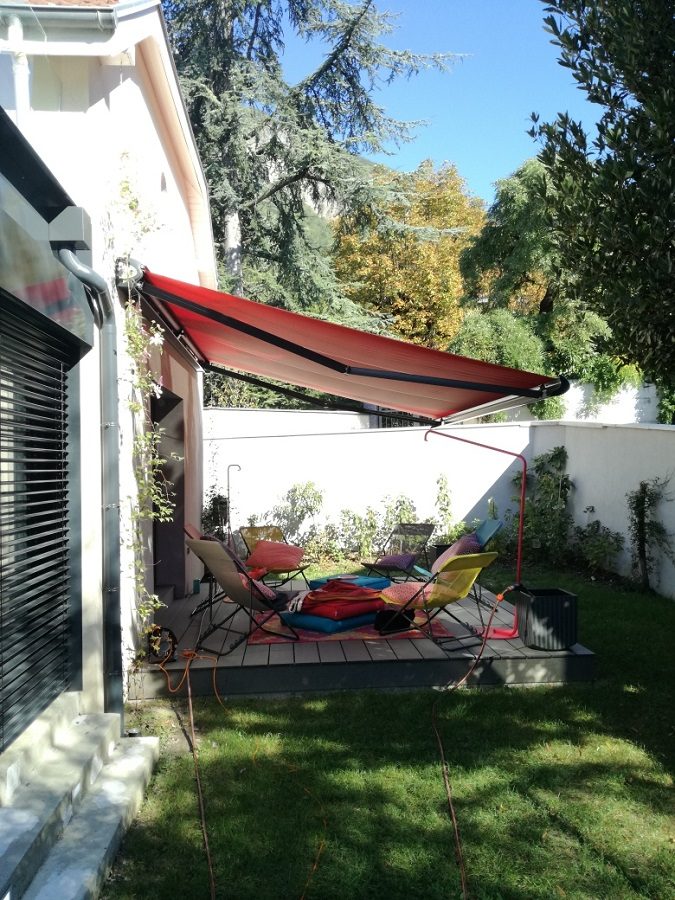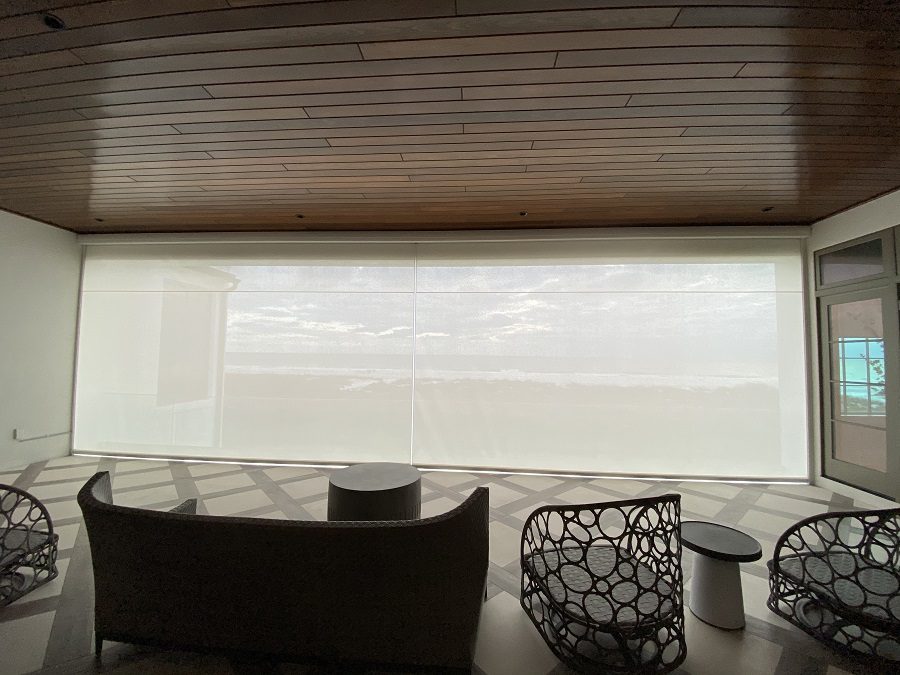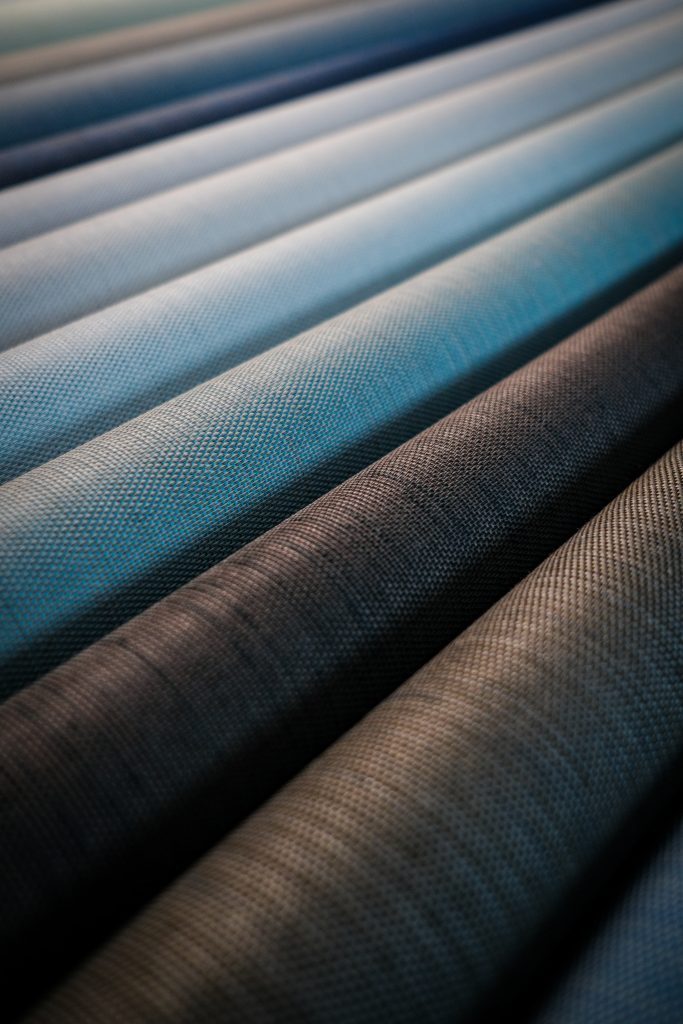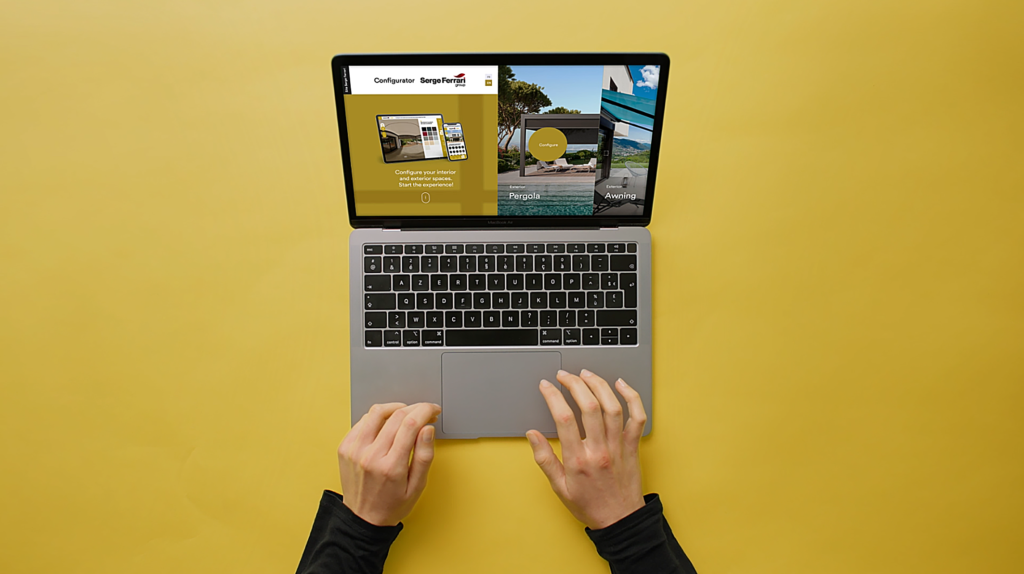Folding-arm awnings are the perfect choice for shielding a balcony or patio from the sun, heat and bad weather. Combining sleek design, high performance and lasting resistance, Soltis fabrics will ideally complete your awning, whatever its size or model.
What are folding-arm awnings?
Folding-arm awnings are probably the most widely used type of outdoor shading solution. It consists of a horizontal articulated frame topped with a canvas, which is attached to an exterior wall, usually above a picture window or French doors, to provide shade on a balcony or patio.
Several types of folding-arm awnings are commercially available:
Non-cassette awnings are less bulky and don’t include any built-in casing. To prevent damage to the fabric and mechanism, it should preferably be installed under a roof overhang or on a wall not directly exposed to harsh weather.
Full-cassette awnings include a full built-in casing. It is the safest option for a longer-lasting solution. When the awning is rolled away, the cassette completely encases the fabric, articulated arms and motor.
Half-cassette awnings provide a middle ground between the two options above. When retracted, only the roll of fabric is encased.
Regardless of the choice you make, folding-arm awnings offer multiple benefits: when rolled out, they filter UV rays, protect against the weather (rain, wind), and act as a thermal barrier, reducing the sensation of heat on your patio. Additionally, folding-arm awnings may be motorised and can even feature integrated LED lighting.
What criteria should I consider when purchasing a folding-arm awning?
For a system that will last in time, choose the right fabric! It has to be wide enough to provide sufficient shading throughout the day. You should also choose a quality fabric that will perform to your expectations.
For optimal comfort, we recommend opting for a micro-perforated screen, which will ensure much higher levels of thermal and visual comfort than acrylic fabrics. Both UV and weather-resistant, these fabrics deliver controlled ambient light, thus preventing glare, and diffuse heat thanks to the constant flow of air circulating through the screen’s micro-perforated surface.
What are the advantages of Soltis fabrics?
Developed by Serge Ferrari Group, our Soltis line of solar protection fabrics offers an array of composite membranes with controlled properties, purposely designed to meet consumer needs.
With lasting resistance, Soltis fabrics will lose neither shape nor colour, even when exposed to UV rays and harsh weather. They also effectively prevent heat build-up and, thanks to our Précontraint® technology, have exceptional dimensional stability.
Our Soltis line includes a range of products for both outdoor and indoor applications. Available in a broad palette of colours, Soltis fabrics come with a variety of properties to best meet any need:
- visual protection against glare;
- natural light;
- opacity;
- thermal comfort;
- watertightness.
If your home is in a particularly sunny environment, choose Soltis 92 in Color or Alu versions for your awning! This solution acts as an effective thermal barrier blocking 97% of heat. Available in 38 colourways, this micro-perforated screen additionally boasts high mechanical resistance and excellent dimensional stability.
Another option is Soltis 96 Color, which will create a comfortable atmosphere on your patio and facilitate natural ventilation. Its micro-perforated structure blocks heat and ensures proper air circulation for a thoroughly enjoyable outdoor experience — like sitting under the shade of a tree.

